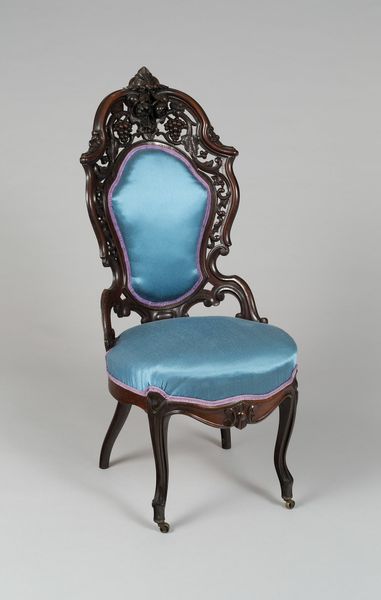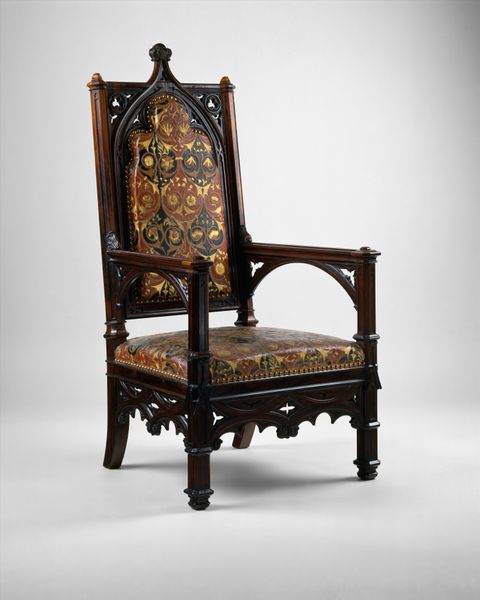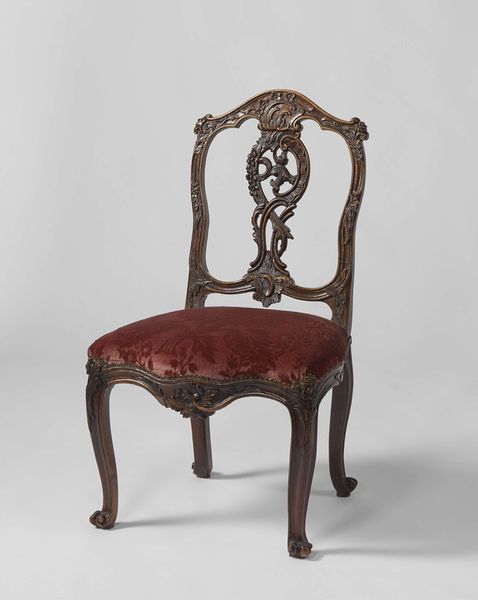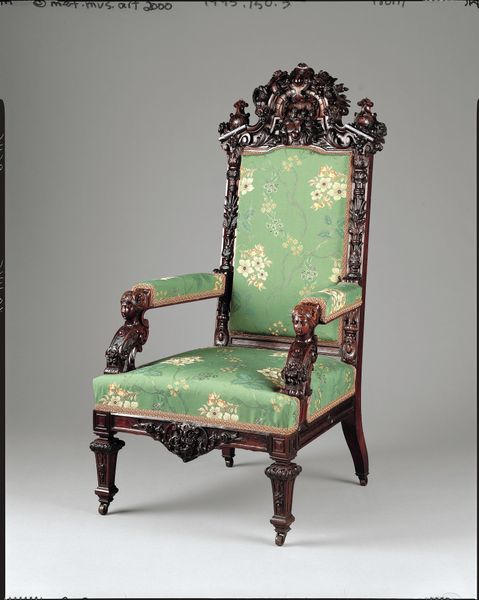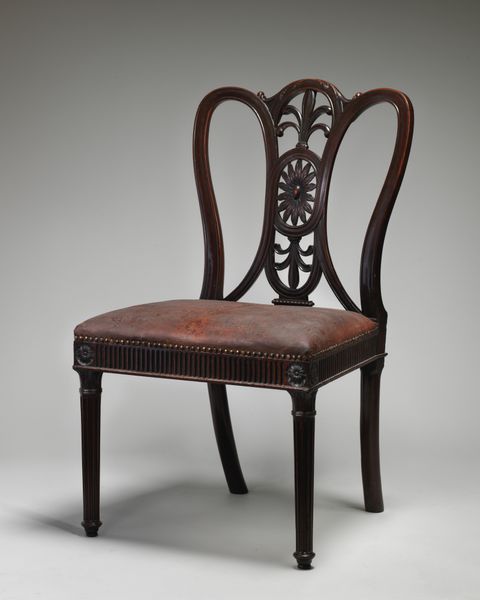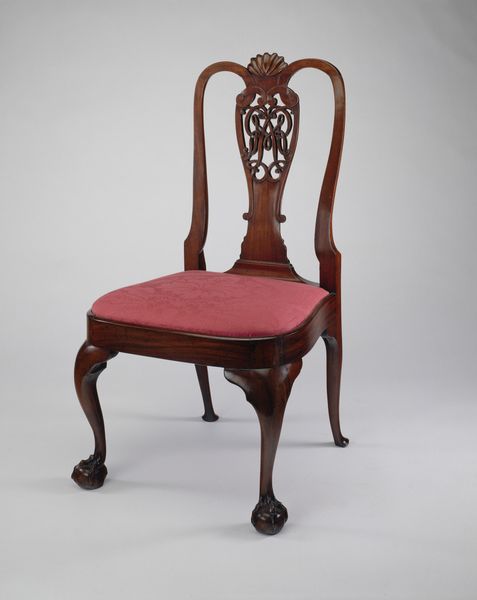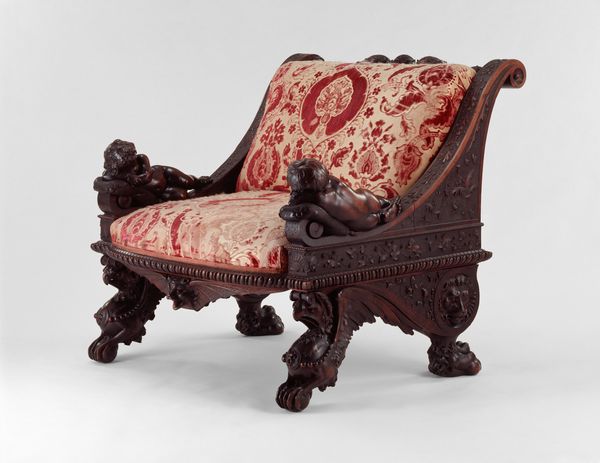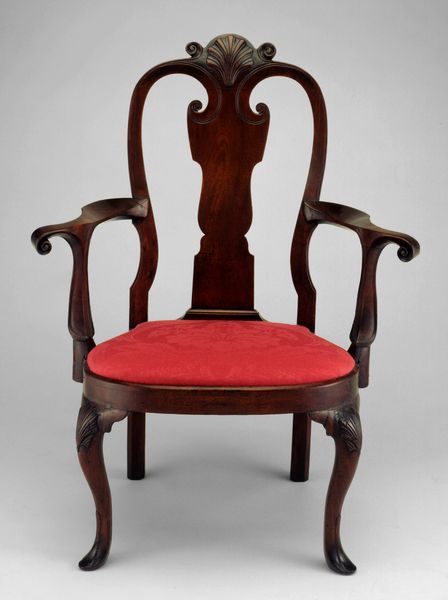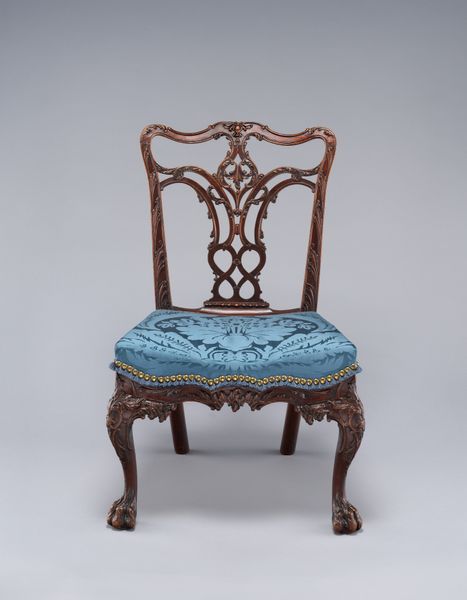
Dimensions: 44 1/4 x 17 1/2 x 16 1/2 in. (112.4 x 44.5 x 41.9 cm)
Copyright: Public Domain
Curator: Ah, the “Slipper Chair” crafted by John Henry Belter between 1852 and 1855. An impressive display of mid-19th century Romanticism now housed at the Metropolitan Museum of Art. Editor: What strikes me immediately is the labor intensity embedded in its production—it seems an incredible feat to execute such detailed carving, an exercise that inherently blends the utilitarian object with exceptional craft. Curator: Indeed, the intricate wood carving dominates the structure and directs our eye vertically; the sweeping curves create a captivating silhouette, don't you agree? Notice how Belter’s skill creates depth within the back, the openwork appearing almost lacelike. Editor: Yes, I’m thinking of the unseen artisans behind its manufacture. How were the materials sourced, and what were the workshop conditions like? The decorative elements, the grape vines and floral motifs, seem to romanticize nature, but I'm interested in the human element required to bring this image into being. Curator: These recurring natural motifs elevate the chair beyond mere furniture; it ventures into the realm of fine art. Consider the choice of wood and its effect on our perception; its deep hue sets off the cool blue of the cushion, generating both balance and contrast. Editor: I wonder if the choice of motifs served also as a class marker? A display of wealth achieved through the labor of many, symbolized by a romanticized image of productive nature, and finally consumed as bourgeois comfort. It definitely sparks an emotional and socio-economical dialogue. Curator: You present such an interesting counterpoint—a challenge to formal assessment that pushes beyond structure. What stands out, then, is how Belter achieves unity through the varied textures of the material components, even though they seem almost at odds at first glance. Editor: Precisely. By interrogating these objects as evidence of human involvement and social meaning, rather than simply as aesthetic forms, we uncover richer stories about those who designed, crafted, and consumed this luxurious object. Curator: It really makes me consider that even as we dissect this remarkable composition, it is so much more complex as an art object and artifact. Editor: Indeed. The chair’s physical presence makes you question art and labour's complicated past, as well as what remains absent or concealed within our understanding of this period.
Comments
No comments
Be the first to comment and join the conversation on the ultimate creative platform.
